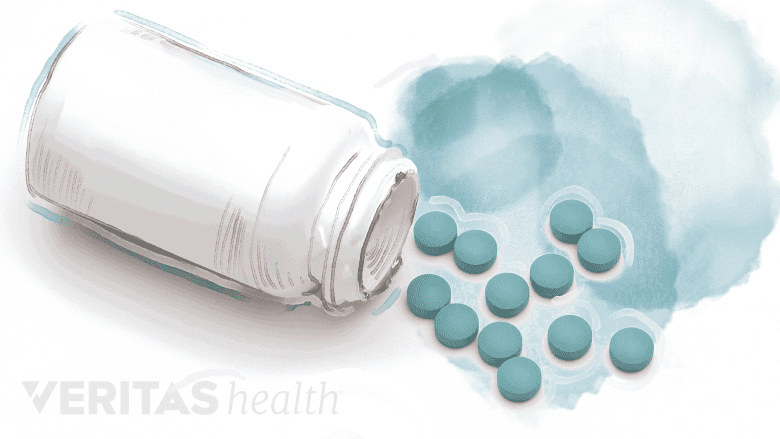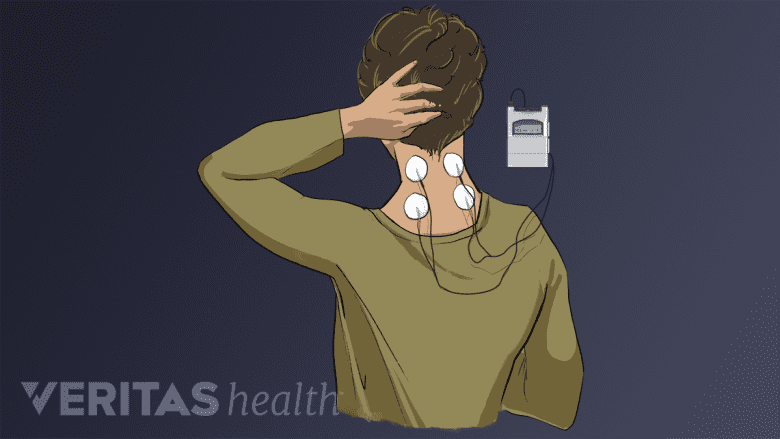While there is currently no treatment for the underlying causes of brachial neuritis, the condition usually heals on its own within a few months or a couple years. Treatments for brachial neuritis typically focus on pain management in the shoulder and/or arm. If weakness develops, physical therapy may be recommended to help recover strength and flexibility in the affected limb.
Treatment plans for brachial neuritis can vary greatly, depending on the specific location, severity, and duration of symptoms. In rare cases, surgery may be needed to aid in the recovery of a muscle.
In This Article:
- Brachial Neuritis (Parsonage-Turner Syndrome)
- Brachial Neuritis Symptoms
- Brachial Neuritis Diagnosis
- Brachial Neuritis Treatment
Pain Management for Brachial Neuritis
The sharp, searing, and/or shooting pains of brachial neuritis can be intense and disabling, especially for the first few hours or days. Most cases of brachial neuritis require some type of treatment to help manage the initial pain levels, such as one or more of the following:
Pain medications

NSAIDs may provide temporary relief from brachial neuritis.
Prescription-strength medications, such as nonsteroidal anti-inflammatory drugs (NSAIDs), opioids, or nerve pain medications (pregabalin, gabapentin) may be recommended on a short-term basis for severe pain. Long-term use of prescription pain medication is usually not advised due to the potential for serious side effects.
See Medications for Back Pain and Neck Pain
Rest or reduced activity
Specifically avoiding movements of the affected arm and shoulder may avoid worsening the pain.
Ice or heat therapy

Ice therapy helps reduce inflammation and heat therapy helps loosen stiff muscles.
Applying ice initially may help reduce inflammation, while applying heat later in the process may help facilitate blood flow to the painful area and loosen stiff muscles. Some people find more pain relief with ice while others prefer heat. When applying ice or heat therapy, care must be taken to check the skin regularly to avoid skin damage due to the temperature becoming too hot or too cold.
Watch How to Use Ice Therapy for Shoulder Pain Relief Video
Transcutaneous electrical stimulation (TENS) unit

TENS therapy uses electrical stimulation to relieve pain by targeting nerves.
This device sends electrical signals via wires to electrodes that are attached to the skin on sticky pads. The goal is for the electrical signals to interfere with and reduce the pain signals being sent to the brain.
See Transcutaneous Electrical Nerve Stimulators (TENS)
This is not a complete list of pain treatments for brachial neuritis. Also, trial-and-error may be needed before a patient finds the best combination of treatments to manage the pain.
Physical Therapy During Brachial Neuritis Recovery

Physical therapy is recommended for brachial neuritis to help regain strength and flexibility.
Before physical therapy can be recommended for brachial neuritis, a doctor typically evaluates the following:
- Pain levels. If arm movements still trigger debilitating pain, exercising and/or stretching the painful limb is not advised. With brachial neuritis, it commonly takes somewhere between a few days and a couple weeks before the pain has subsided enough to start physical therapy.
- Shoulder/arm/hand strength and range of motion. A doctor, physical therapist, or other trained health professional observes which motions are possible in the arm and hand, and compares the biomechanics of the affected limb with the healthy limb.
- Nerve function. Electrodiagnostics are done to assess how much of the weakness in the shoulder, arm, or hand is caused by denervation (loss of nerve supply). Strengthening exercises are not possible or effective on a muscle that is experiencing complete denervation.
Once pain levels, strength, biomechanics, and nerve function have been assessed, a physical therapy program can be designed with specific exercises and stretches to best help the patient regain strength and flexibility.
Surgical Options for Brachial Neuritis

In a tendon transfer procedure, a healthy tendon is connected to a damaged tendon to restore its function.
While most cases of brachial neuritis slowly get better with time, some cases do not. If muscle weakness or paralysis shows no signs of improvement after several months, surgery may be an option. A couple of the more common surgical options for brachial neuritis include:
- Nerve graft. Part of a healthy nerve is taken from a different area of the body, such as from the leg or back, and then grafted onto the damaged nerve area to help regenerate and restore its function.
- Tendon transfer. A tendon is taken from a healthy muscle and transferred to a damaged tendon in order to restore its connected muscle’s function.
Typically, surgery for brachial neuritis is performed to help regain the ability to lift the arm upward. If nerve reconstruction surgery can be performed within 6 to 12 months of the onset of brachial neuritis, the surgery has a better chance of succeeding If nerve reconstruction (such as a nerve graft or transfer) is not done within 12 months, a tendon transfer may be recommended as having a better chance to achieve improved muscle function.

